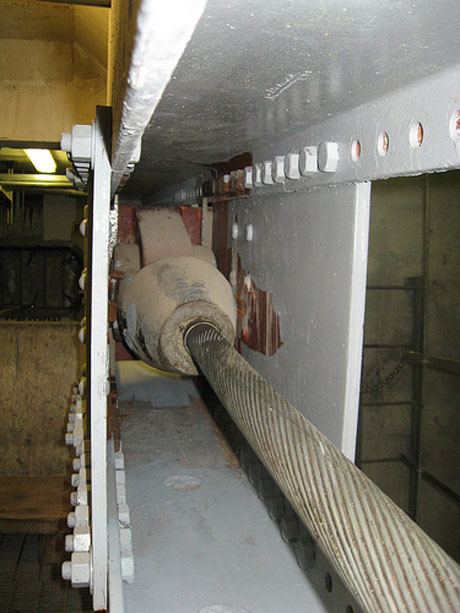Crews working for the Washington State Department of Transportation (WSDOT) have begun removing and replacing 30 frayed and corroded anchor cables that hold the bridges in place on Lake Washington during windstorms.
The work, which will take place over the next five months, involves both the Interstate 90 Homer Hadley floating bridge and the State Route 520 Evergreen Point floating bridge.
“Because these bridges are so valuable to the public, we must make sure they are always in good working order,” said Ralph Dornsife, WSDOT bridge engineer. “Together, these bridges carry more than 250,000 vehicles each day and even more commuters in buses and vanpools.”
The floating bridge pontoons are connected to anchors on the bed of Lake Washington by dozens of thick-stranded steel cables. Some of these cables, which help the bridges face strong winds and pounding waves each winter, are nearing the end of their design life. Worn or corroded cables pose a higher risk of snapping during a windstorm, which could lead to a long-term closure of the bridges.
The $4.3 million project replaces 15 of 52 cables on I-90 and 15 of 58 cables on SR-520.
Unlike a typical road project, much of the work to replace anchor cables will be out of the public eye. Specially trained commercial deep-sea divers will haul the cables as deep as 200 feet, remove the old cables and attach the new ones. A barge will be standing by with an on-board decompression chamber to treat divers after they resurface.
Once each new cable is connected to its anchor on the lake bed, workers can fasten them to the floating bridge pontoons. Each cable takes about a day to replace.
During construction, drivers might see boats near the bridges as divers do underwater repairs. The public should not be concerned about increased activity in the water or on the pontoons, state officials say.
The current SR-520 floating bridge is vulnerable to windstorms and earthquakes. WSDOT is on track to replace the entire SR-520 floating bridge and open it to traffic in 2014.
Even though the bridge is scheduled to be replaced in coming years, engineers determined that 15 of the 58 cables must still be replaced to securely anchor the SR-520 bridge to the lake bed and protect it during heavy winds. Cables not replaced by this project will be re-evaluated every two years until construction of the new bridge is completed.
Crews completed test dives on I-90 in early April. They will first complete work on the I-90 bridge before moving on to the SR-520 bridge in May. Drivers should expect nighttime lane closures during construction.


